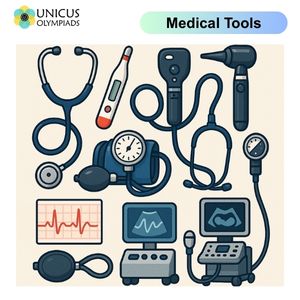

Medical tools are essential in helping doctors diagnose, monitor, and treat patients. They assist in gathering information about a patient's condition, enabling doctors to make informed decisions. One of the most commonly used tools in the medical field is the stethoscope, but there are many other tools that doctors rely on to provide effective care.
The stethoscope is one of the most iconic tools in medicine, widely used by doctors to listen to the internal sounds of a patient's body. It helps doctors assess the condition of the heart, lungs, and other organs, and is an essential diagnostic tool in primary care and various specialties.

The thermometer is an essential tool for measuring a patient's body temperature, which is a key indicator of health. An elevated temperature can indicate an infection, while a low temperature might suggest hypothermia or other conditions.
Blood pressure cuffs are used to measure a patient's blood pressure. This tool helps doctors assess the cardiovascular system and determine if a patient has high blood pressure (hypertension) or low blood pressure (hypotension), both of which can lead to serious health issues if untreated.
An otoscope is used by doctors to examine the ears, including the ear canal and eardrum. It is a common tool in diagnosing ear infections, hearing loss, and other ear-related issues.
The ophthalmoscope is used to examine the eyes, specifically the retina, optic nerve, and blood vessels. It plays a crucial role in diagnosing eye diseases, including glaucoma, macular degeneration, and diabetic retinopathy.
A pulse oximeter is a non-invasive tool used to measure the oxygen saturation level in a patient's blood. When combined with a stethoscope, doctors can monitor a patient's cardiovascular and respiratory health more efficiently.
The electrocardiogram (ECG) is a diagnostic tool that measures the electrical activity of the heart. It helps doctors detect arrhythmias (irregular heartbeats), heart attacks, and other cardiovascular conditions.
X-rays are a form of electromagnetic radiation used to create images of the inside of the body. They are commonly used to examine bones, detect fractures, and diagnose conditions such as pneumonia and certain cancers.
Ultrasound uses high-frequency sound waves to create images of the inside of the body. It is commonly used to monitor pregnancies, examine the abdomen, and assess blood flow in veins and arteries.
The sphygmomanometer, often used alongside a stethoscope, measures blood pressure by assessing the force of blood against artery walls. It is essential for diagnosing hypertension and assessing heart health.